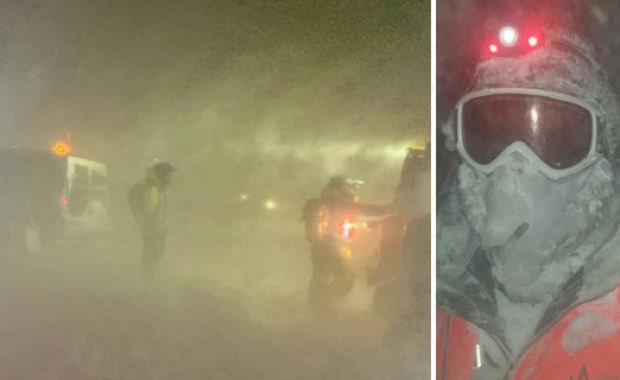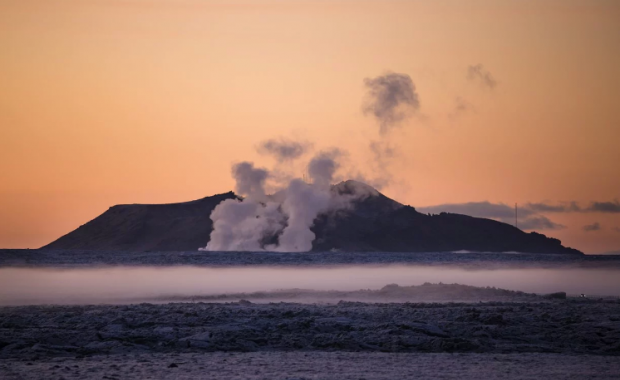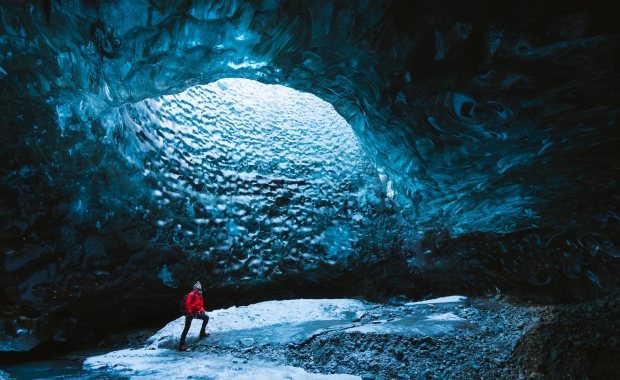For the Aurora Borealis to be seen, conditions have to be ideal: a dark but clear sky. Typically, the aurora appears either as a diffuse glow or as “curtains” of light that evolve and change constantly. The phenomenon occurs in Iceland all year around, given that the auroral zone is situated above the country. However, it can’t be seen between the months of September and May, because of the brightness of the summer sky.
Contrary to common belief, the Aurora Borealis is most commonly seen around the equinoxes (late March and late September) and not during the winter months. Autumn is usually warmer than spring and that increases the likelihood of auroral displays.
A sight unrivaled by any other phenomenon
According to Dr. Þorsteinn Sæmundsson, an astronomer who has studied the Auroras Borealis for decades, it is difficult to predict auroral activity with any accuracy. Northerners like to maintain that sightings are more common and spectacular in the north of Iceland than in the south; the truth of the matter is that there is little if any difference between the two regions.
The magnificent colours and swift movements of the aurora present a sight unrivaled by any phenomenon in nature
One thing that helps predict auroral activity is the fact that auroras are more frequent during the intense phase of the solar cycle, when coronal mass ejections (or huge quantities of matter and electromagnetic radiation that are released into space above the sun’s surface) increase the intensity of the solar wind. Secondly, Northern Lights usually occur in Iceland at around midnight.

The year 2013 was predicted to be an extremely good year for Northern Light sightings. But was it, in fact?
“I don’t think the year was all that good for auroral observers in Iceland. The main reason was unfavourable weather, but the sun was also less active than had been expected. However, the aurora does not follow solar activity as closely as commonly thought, and we may well see some fine displays in the declining years of the solar cycle,” says Sæmundsson.
What is it about the Northern Lights that you find so captivating?
“In my opinion, the magnificent colours and swift movements of the aurora present a sight unrivaled by any phenomenon in nature, with the possible exception of a total solar eclipse,” he explains, adding that, out of the hundreds of displays he has seen in his lifetime, two left a particularly strong impression on him.
The beauty of this display was indescribable and marked the beginning of my lifelong interest in the aurora
“The first was a display I saw at the early age of 8 or 9, standing alone in a field covered by snow. This aurora was bright but not particularly colourful. The changing shapes finally formed what looked like a gigantic hand, directly overhead. I found the sight a little scary and headed for home! The second occasion was the first major display I witnessed after I began to make regular auroral observations. The date was September 25, 1952, according to my diary. The beauty of this display was indescribable and marked the beginning of my lifelong interest in the aurora.”
Ocean surrounded by vast fires
The first Nordic account of an aurora, or norðurljós as they are called in Icelandic, is found in the book Konungsskuggsjá, which is thought to have been written for the son of King Hákon Hákonarson of Norway around 1250. The book tells of voyagers who witnessed the Northern Lights when returning to Norway from Greenland. Konungsskuggsjá gives three possible explanations for the spectacle: that the ocean was surrounded by vast fires, that the rays of the sun could reach around the Earth to its night side, or that glaciers could store so much energy that they became fluorescent.
Although modern science has explained the phenomenon that is the Aurora Borealis, the spectacle still stirs up feelings of awe and admiration in those who experience the magical and otherworldly green curtain that dances lightly across the starry winter skies.
For the Aurora Borealis to be seen, conditions have to be ideal: a dark but clear sky. Typically, the aurora appears either as a diffuse glow or as “curtains” of light that evolve and change constantly. The phenomenon occurs in Iceland all year around, given that the auroral zone is situated above the country. However, it can’t be seen between the months of September and May, because of the brightness of the summer sky.
Contrary to common belief, the Aurora Borealis is most commonly seen around the equinoxes (late March and late September) and not during the winter months. Autumn is usually warmer than spring and that increases the likelihood of auroral displays.
A sight unrivaled by any other phenomenon
According to Dr. Þorsteinn Sæmundsson, an astronomer who has studied the Auroras Borealis for decades, it is difficult to predict auroral activity with any accuracy. Northerners like to maintain that sightings are more common and spectacular in the north of Iceland than in the south; the truth of the matter is that there is little if any difference between the two regions.
The magnificent colours and swift movements of the aurora present a sight unrivaled by any phenomenon in nature
One thing that helps predict auroral activity is the fact that auroras are more frequent during the intense phase of the solar cycle, when coronal mass ejections (or huge quantities of matter and electromagnetic radiation that are released into space above the sun’s surface) increase the intensity of the solar wind. Secondly, Northern Lights usually occur in Iceland at around midnight.

The year 2013 was predicted to be an extremely good year for Northern Light sightings. But was it, in fact?
“I don’t think the year was all that good for auroral observers in Iceland. The main reason was unfavourable weather, but the sun was also less active than had been expected. However, the aurora does not follow solar activity as closely as commonly thought, and we may well see some fine displays in the declining years of the solar cycle,” says Sæmundsson.
What is it about the Northern Lights that you find so captivating?
“In my opinion, the magnificent colours and swift movements of the aurora present a sight unrivaled by any phenomenon in nature, with the possible exception of a total solar eclipse,” he explains, adding that, out of the hundreds of displays he has seen in his lifetime, two left a particularly strong impression on him.
The beauty of this display was indescribable and marked the beginning of my lifelong interest in the aurora
“The first was a display I saw at the early age of 8 or 9, standing alone in a field covered by snow. This aurora was bright but not particularly colourful. The changing shapes finally formed what looked like a gigantic hand, directly overhead. I found the sight a little scary and headed for home! The second occasion was the first major display I witnessed after I began to make regular auroral observations. The date was September 25, 1952, according to my diary. The beauty of this display was indescribable and marked the beginning of my lifelong interest in the aurora.”
Ocean surrounded by vast fires
The first Nordic account of an aurora, or norðurljós as they are called in Icelandic, is found in the book Konungsskuggsjá, which is thought to have been written for the son of King Hákon Hákonarson of Norway around 1250. The book tells of voyagers who witnessed the Northern Lights when returning to Norway from Greenland. Konungsskuggsjá gives three possible explanations for the spectacle: that the ocean was surrounded by vast fires, that the rays of the sun could reach around the Earth to its night side, or that glaciers could store so much energy that they became fluorescent.






